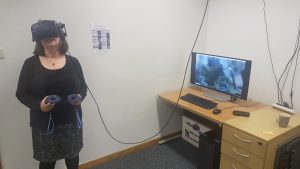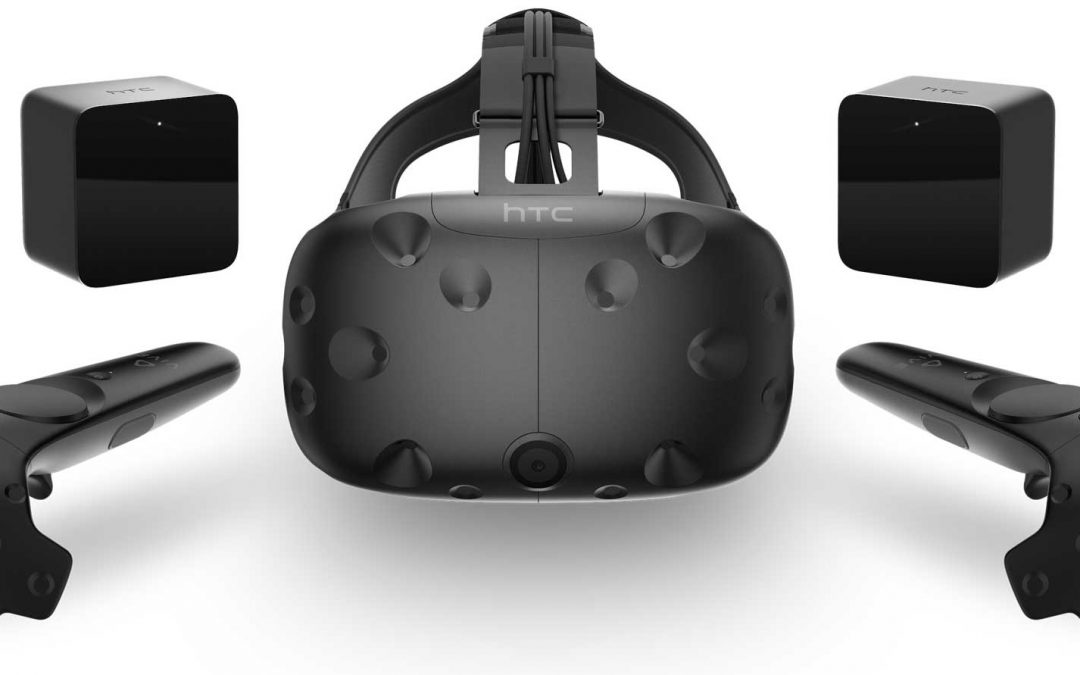When you primarily teach online, you often get invited or included in events about emerging technologies and their role and suitability in Higher Education. For about a year, we have been increasingly fascinated by the potential of Virtual Reality (VR) as a teaching tool. Egyptology is a very visual subject, and the idea that one could – for instance – take students on an immersive guided tour of an Egyptian tomb without ever leaving the classroom is very exciting. In particular given the very recent availability of fantastic VR resources such as the Describing Egypt project.

Dr Tyldesley under attack from virtual spiders!
In this vein, Drs Tyldesley and Nielsen visited the newly founded and cutting-edge VR hub in the Stopford Building at the University of Manchester directed by Dr Anthony Payton. The project is still being developed, but the team has access to some very top-of-the-range VR headsets, and Dr Payton ran a series of programmes which allowed the visiting Egyptologists to experience the incredibly immersive experience of Virtual Reality – including a fascinating jaunt under the sea to view a whale up close, a visit to a virtual anatomy classroom and – in the case of Dr Nielsen – a virtual fall from a twenty-story building which nearly brought him to his knees.
Teaching is about engaging students. And Virtual Reality certainly has the potential to provide a fascinating addition to more traditional teaching methods – and even to replace some aspects of them. We are very grateful to Dr Payton for his demonstration and hope to continue our experimentation with VR in our up-coming face-to-face unit Introduction to the History and Culture of Pharaonic Egypt, as well as trying to identify ways in which VR can be used to enhance the learning experience of our distance learning students on the Certificate, Diploma and MA programmes.







Recent Comments